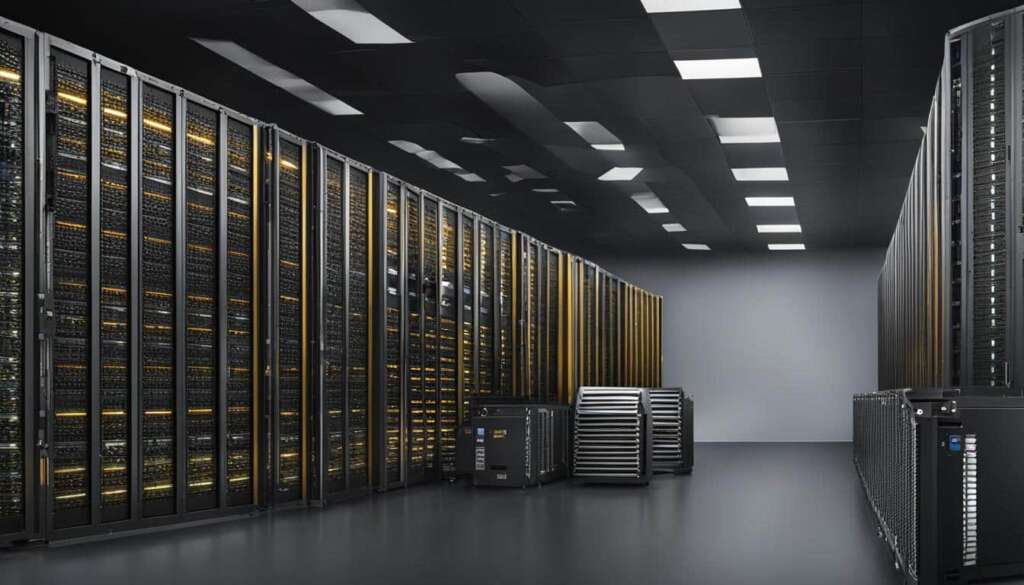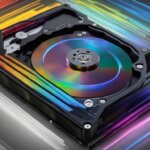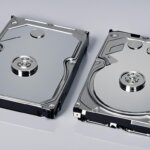Table of Contents
RAID 5 is a widely-used data storage technology known as a redundant array of independent disks. It offers a good balance between storage efficiency and performance, making it a popular choice for organizations. RAID 5 utilizes disk striping with parity to distribute data and redundancy across multiple disks.
One of the key advantages of RAID 5 is its data redundancy and fault tolerance. It requires a minimum of three hard disk drives (HDDs) and has no maximum limit, allowing for flexible storage capacity. When data is written to the RAID 5 drive, parity is calculated and stored on a separate drive. In the event of a disk failure, RAID 5 can reconstruct the missing data using the parity information, ensuring continuous access to data.
RAID 5 also offers excellent read speeds, making it suitable for applications and file servers that require fast access to data. It evenly balances read and write operations, providing reliable performance. Additionally, RAID 5 is cost-effective compared to other RAID configurations, as it requires fewer drives to implement.
While RAID 5 offers many advantages, it’s important to consider its limitations. The rebuild time can be lengthy, and if another drive fails during the rebuilding process, data loss may occur. It’s also important to note that RAID 5 is not a comprehensive disaster recovery solution.
Despite these drawbacks, RAID 5 remains a popular choice for its efficiency, performance, and data security. It is widely used in application and file servers with a limited number of drives.
To learn more about the benefits and advantages of RAID 5, continue reading the next section.
Benefits and Advantages of RAID 5
RAID 5 offers several benefits and advantages compared to other RAID configurations. One of the main advantages of RAID 5 is its efficient use of storage space. It provides more usable storage than RAID 1 and RAID 10 configurations while still maintaining data redundancy and fault tolerance.
RAID 5 also offers excellent read speeds, making it suitable for applications and file servers that require fast access to data. This can significantly improve the performance of data-intensive tasks and enhance user experience.
Another advantage of RAID 5 is its cost-effectiveness. It requires a minimum of three hard disk drives, making it less expensive to implement compared to other RAID levels. This makes it an attractive option for organizations with budget constraints or limited resources.
Additionally, RAID 5 provides a good balance between data security, fault tolerance, and performance. It can tolerate the failure of a single drive without losing any data, thanks to the distributed parity across the disks. In the event of a drive failure, RAID 5 can continue to operate seamlessly while the failed drive is being rebuilt.
For environments where data loss is unacceptable, such as data archiving, RAID 5 proves to be a reliable choice. Its data redundancy and fault tolerance capabilities ensure the integrity and availability of stored data.
However, like any technology, RAID 5 has its drawbacks. One of the main drawbacks is the longer rebuild times compared to other RAID configurations. Rebuilding a failed drive can take a considerable amount of time, during which the system may experience reduced performance. It’s important to consider this aspect when planning for RAID 5 implementation.
Another potential issue is the potential for data loss if multiple drives fail during the rebuilding process. As RAID 5 relies on distributed parity for data redundancy, losing more than one drive can result in irrecoverable data loss. It’s crucial to have a backup strategy in place to mitigate this risk.
In summary, RAID 5 offers several benefits, including efficient storage space utilization, excellent read speeds, cost-effectiveness, and a good balance between data security, fault tolerance, and performance. Organizations looking for a reliable and cost-effective storage solution should consider RAID 5 as a viable option, keeping in mind its limitations and the importance of proper backup and recovery strategies.
RAID 5 vs Other RAID Configurations
When it comes to data storage, RAID 5 is often compared to other RAID configurations to determine the best option for specific needs. One common comparison is RAID 5 vs RAID 1. RAID 5 offers higher storage capacity and better efficiency, while RAID 1 provides faster write speeds and is more suitable for environments where data loss is unacceptable.
Another popular choice is RAID 5 vs RAID 6. RAID 6 offers higher data protection, as it can withstand the failure of two drives simultaneously, making it more secure than RAID 5. However, RAID 6 has slower write speeds and requires a minimum of four drives.
Additionally, RAID 5 can be compared to RAID 10 (RAID 1+0). RAID 10 combines the advantages of RAID 1 and RAID 0, providing fast rebuild times and improved data protection compared to RAID 5. However, RAID 10 requires more drives and uses half of the total storage capacity for mirroring.
It is essential to consider the specific requirements of the storage environment to determine which RAID configuration is the best fit. While RAID 5 remains a popular choice due to its efficient storage utilization, good performance, and data redundancy, technology advancements may bring forth new RAID options to address the limitations and drawbacks of existing configurations.
FAQ
What is RAID 5?
RAID 5 is a popular and widely-used data storage technology known as a redundant array of independent disks. It utilizes disk striping with parity to distribute data and redundancy across multiple disks.
What are the advantages of RAID 5?
RAID 5 offers several benefits, including efficient use of storage space, excellent read speeds, cost-effectiveness, data redundancy, and fault tolerance.
How does RAID 5 compare to other RAID configurations?
RAID 5 is compared to other RAID configurations like RAID 1, RAID 6, and RAID 10 based on storage capacity, efficiency, data protection, write speeds, and the number of drives required.
What are the drawbacks of RAID 5?
RAID 5 has drawbacks such as longer rebuild times and the potential for data loss if multiple drives fail during the rebuilding process.












